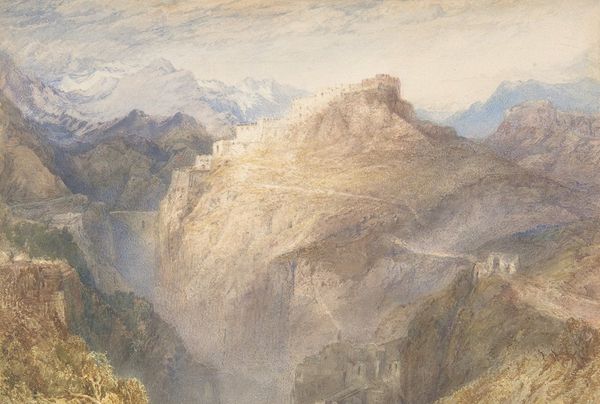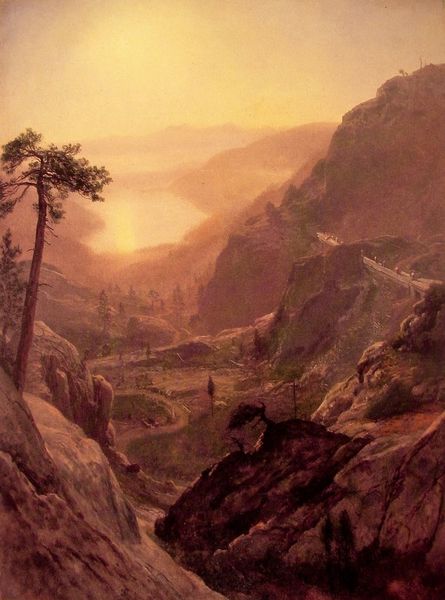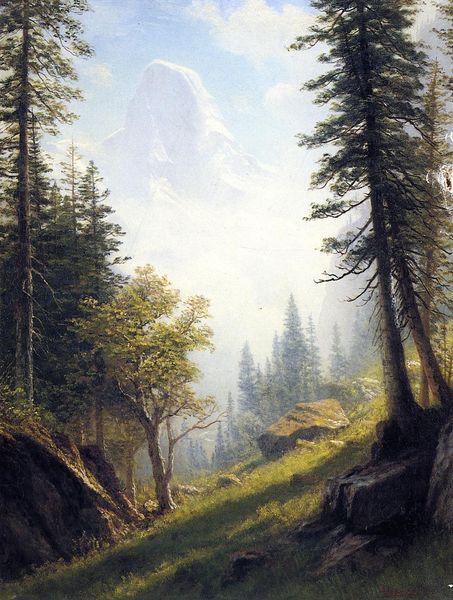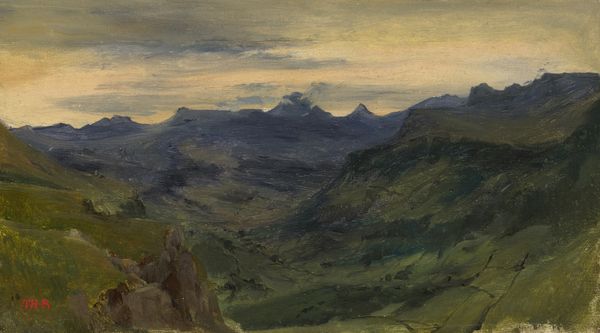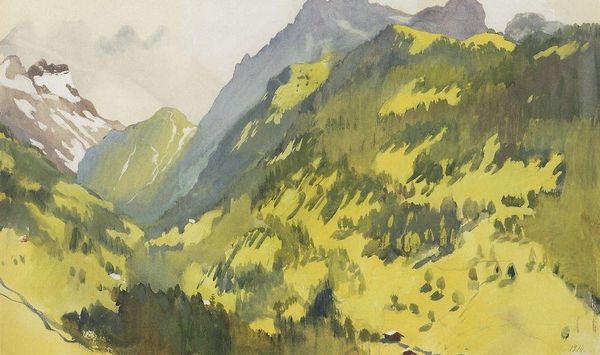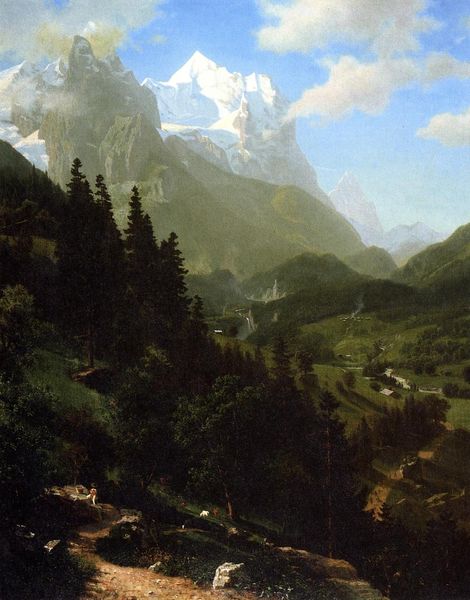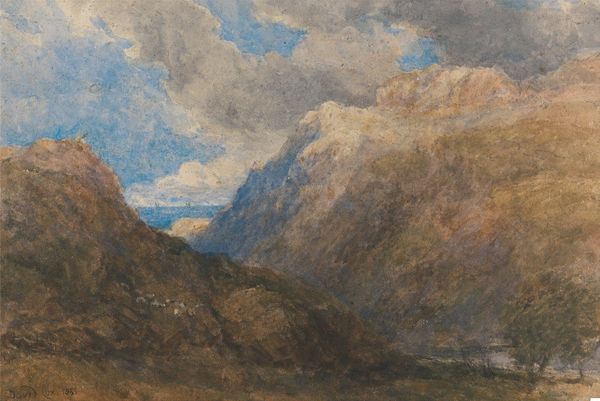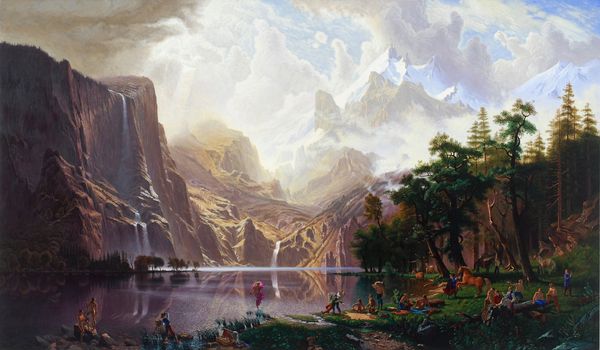
painting, oil-paint
#
painting
#
oil-paint
#
landscape
#
oil painting
#
mountain
#
hudson-river-school
#
realism
Dimensions: 64.14 x 48.9 cm
Copyright: Public domain
Editor: So this is "Twin Peaks, Rockies," an oil painting by Albert Bierstadt. It's certainly dramatic, almost theatrical with the light and the imposing mountains. What catches your eye from a formal perspective? Curator: Thank you for your initial observations. Examining the composition, notice how Bierstadt employs a pronounced foreground, middle ground, and background. The stark contrast in values between the sunlit foreground and the hazy, almost ethereal, peaks directs the viewer's eye upwards, creating a sense of scale and sublime distance. How does the treatment of light inform your understanding of depth here? Editor: I see it. The brighter green and detailed textures in the foreground lead to the more muted, cooler tones of the mountains, suggesting great depth. The atmospheric perspective really pushes the mountains far away. But why such an emphasis on the vertical? Curator: The verticality here isn't just a representation of mountainous terrain; it's a formal device to emphasize the power and grandeur of nature. Bierstadt masterfully controls the tonal gradations to sculpt form and evoke a sense of awe. Consider the interplay between light and shadow, which gives volume to the mountains. Do you see how this formal structure shapes the emotional impact of the work? Editor: Absolutely. The sharp contrast, combined with the verticality, definitely adds to that feeling of awe, but also a little bit of… intimidation maybe? It feels staged in a way that nature rarely does. Curator: Indeed. The artist's deliberate arrangement invites a critical consideration of how nature can be reshaped and repackaged in an artistic representation through careful control of form, depth and lighting. How do these choices influence the observer’s understanding of wilderness, and the pictorial narrative that Bierstadt is constructing? Editor: That's fascinating. It changes the way I look at it entirely. I was so caught up in the dramatic effect that I didn't consider how deliberately constructed the scene really is. Curator: And this attentiveness to structure is paramount in understanding both Bierstadt’s ambition and the pictorial rhetoric of landscape painting at this period.
Comments
No comments
Be the first to comment and join the conversation on the ultimate creative platform.

